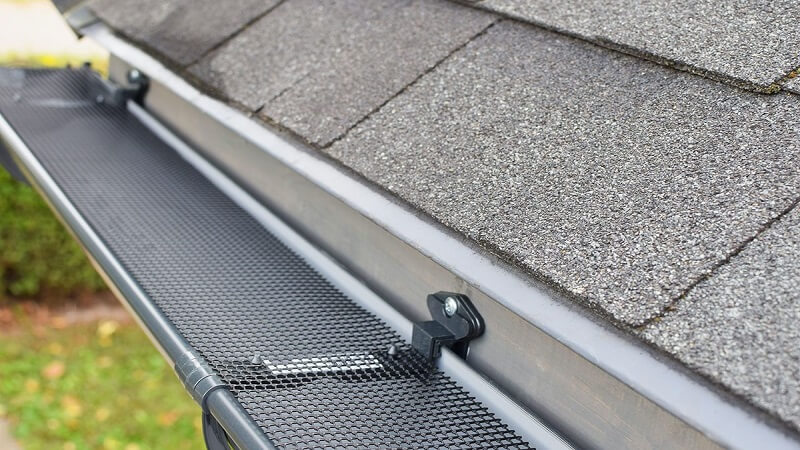Clogged gutters can do more than just overflow — they can cause serious structural damage to your home, including water intrusion, mould growth, and foundation problems. That’s why more homeowners are investing in gutter guard systems to prevent debris build-up and reduce ongoing maintenance. But the effectiveness of these systems hinges not just on the product itself, but on the quality of the installation.
If you’ve started researching gutter guard installers in your area, you may be overwhelmed by the range of options available. Knowing what to look for before signing a contract can make the difference between a one-time fix and a long-term solution. Here’s a comprehensive checklist to guide your decision.
1. Experience with Different Roof Types
Not all roofs are created equal — and neither are gutter systems. Whether your home has asphalt shingles, metal roofing, or cedar shakes, an installer’s experience with your specific roof type ensures that the gutter guards are installed securely without causing unintended damage. Improper installation on metal roofs, for instance, can interfere with snow guards or void warranties. Always ask whether the team has handled projects similar to yours.
2. Product Compatibility and Recommendations
A professional installer won’t just push a one-size-fits-all solution. Instead, they should assess your home’s needs and recommend a guard system suited to your environment. For example, mesh guards may be ideal in areas with heavy rainfall, while brush or foam inserts might underperform in high-debris zones. A reputable installer will consider local weather conditions, surrounding foliage, roof pitch, and your existing eavestroughs before suggesting a product.
3. Transparent Pricing and Detailed Quotes
Ambiguity around pricing is a red flag. Trusted installers provide detailed quotes that outline labour, materials, disposal of old components, and any warranties or guarantees. Watch out for vague estimates or last-minute upsells. If the installer is hesitant to put everything in writing, it’s a sign to move on.
4. Proof of Licensing and Insurance
Proper credentials are non-negotiable. Before any work begins, verify that the installer has the necessary licensing to operate in your province. They should also carry liability insurance and worker’s compensation coverage — not only to protect their team, but to shield you from potential legal or financial liability if something goes wrong onsite.
You can typically confirm licensing through your province’s consumer protection agency. In Ontario, for example, contractors should be registered with the Ontario College of Trades.
5. Installation Process and Timeline
Ask about the full installation process — from initial assessment to clean-up. A well-organised crew will walk you through the steps, provide a realistic timeline, and ensure minimal disruption to your property. They should also include gutter inspection, cleaning, and minor repairs as part of the prep work. Skipping this step often results in guards being installed over already-damaged systems, which defeats the purpose altogether.
6. Warranty Coverage on Both Labour and Materials
Quality gutter guard systems typically come with manufacturer warranties, but not all installers offer labour warranties. Look for companies that stand behind both the product and their workmanship. A dual warranty ensures that if the guards fail due to installation errors, you’re not left footing the bill. Also, check whether the installer will help you file a warranty claim if issues arise.
For a deeper understanding of home improvement warranties, this CMHC article outlines your rights and protections under Canadian law.
7. Real Customer Reviews and Local References
Don’t just rely on testimonials posted on the company’s website. Check independent platforms like Google Reviews, Better Business Bureau, or HomeStars to gauge customer satisfaction. Look for mentions of professionalism, timeliness, follow-up service, and problem-solving. Ask if the installer can provide references from recent clients in your area. A reliable professional will gladly connect you with happy customers.
8. Aftercare and Maintenance Support
Even the best-installed gutter guards benefit from occasional inspection and rinsing — especially in areas with pine needles, seeds, or snow accumulation. A trusted installer should offer seasonal maintenance or inspection packages or at least provide you with clear guidance on how to care for your system post-installation. Bonus points if they provide a detailed care manual or follow up after the first heavy rainfall.
9. Safety Protocols and Clean Worksites
Climbing ladders and working on rooftops involves risk. Ask about the team’s safety training, whether they follow provincial OHSA regulations, and how they protect your landscaping and exterior while on the job. A good installer maintains a clean, professional worksite, disposing of old gutters and debris without leaving a mess behind.
10. Clear Communication from Start to Finish
Responsiveness and clear communication are often overlooked but critical. From the initial quote request to post-installation support, pay attention to how the company communicates. Do they return calls promptly? Are they patient with your questions? Do they explain the pros and cons of different systems honestly? Communication breakdowns early on often foreshadow trouble later.
Your Home Deserves a Thoughtful Approach
Hiring a gutter guard installer isn’t just about finding someone with a ladder and a drill. It’s about protecting your home from water damage, improving curb appeal, and reducing maintenance headaches. By doing your due diligence and asking the right questions, you ensure the investment pays off for years to come.
Whether you’re dealing with a leaf-heavy property or simply want peace of mind during spring melt or autumn storms, choosing the right professional can make all the difference. Use this checklist to guide your selection process — and don’t rush it. Your gutters — and your foundation — will thank you.

